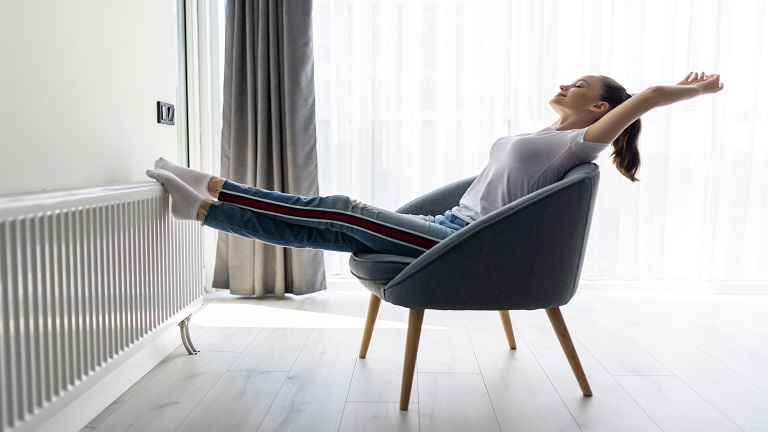
Which ventilation system works best for your home?
If you are reading this, it is obvious that you understand the importance of ventilation. While natural ventilation is a preferred method and has advantages, there are pitfalls to it. Given the state of air quality in our cities today, opening windows to let in the fresh air is no longer sufficient. A fresh air ventilation for home has become commonplace now. Let us look at all options available to make indoor air in your home fresh, clean and germ-free.
Natural ventilation:
Opening a window, and airing out the rooms are great ways to ventilate your home. They are cheap and effective.
However, this has its own limitations.
For instance, ventilating by opening a window does not work when the temperature is too low. Similarly, it is not feasible when it is raining outside since the air that comes in would be damp, heavy and sticky.
When homes are close to factories or forests, the chances of air-carrying pollutants and allergens are high when you open a window.
Perfect weather exists only on a few days throughout the year. During these days, the home can be ventilated using natural ventilation methods.
But most days there is too much humidity, heat or pollution in the air.
HVAC systems
Using a duct that connects your HVAC system to outdoor air will bring in fresh air into your home directly. Most central ventilation systems have filters that are placed at the plenum and not at the air vents. This means clean, germ-free air enters your home.
Another added advantage of this setup is that you get positive pressure ventilation, which means equal amounts of stale air are flushed out when fresh air comes in. This essentially gives you the advantages of opening a window, while cutting out its disadvantages.
However, you still have disadvantages with this method due to weather conditions. During summers in India, where temperatures touch 48-49 degrees, incoming air can be hot. Similarly, monsoons in India are heavy, and humidity can make walls damp, and indoor air heavy. Hot air or humid air coming in could mean your air conditioning system will have to work harder. Further, the ducts bringing in air from outside could become dirty with dust deposits along the lining.
But this can be resolved using a prefilter. Filters also could require frequent changes depending on air quality. This method works well and is recommended for existing buildings or old homes where a lot of civil or structural changes cannot be made.
Full house dehumidifier:
This is a level-up from a duct to the HVAC system. In India, where the climate is predominantly tropical and sub-tropical the weather is hot, dry or extremely humid.
A full-house dehumidifier is a great solution, especially during summers and monsoons. In summer, when we use air conditioners most of the time, humidity control becomes a challenge. Air conditioners supplemented with dehumidifiers will make up for the difference. It can also help to filter the air that comes in through an inward duct, remove the humidity of incoming air during monsoons, and maintain an overall positive pressure on the home.
Energy Recovery ventilator:
An energy recovery ventilator is a complete package when it comes to a Mechanical Fresh Air Ventilation System for the Home. It combines the advantages of a dehumidifier and also transfers heat and moisture between incoming and outgoing air.
This means that if incoming air contains moisture and heat then the outgoing air is transferred so that optimum levels are maintained.
What is different though is the principle of operation. Where a dehumidifier removes moisture, an ERV transfers moisture and heat between air streams. The biggest advantage of this transfer mechanism is that an ERV works during both summers and monsoons. When combined with some great filters like HEPA, the incoming air is guaranteed to be fresh.
HEPA filters are known to filter out allergens, pollen, and microbes including the COVID-19 virus. Energy recovery ventilators are also extremely energy efficient, which means you can run them 24 x 7.
Choosing the Right AIR Ventilation System for Your Home
When considering air ventilation for your home, it’s important to choose the right system to maximize the benefits. Assess your specific needs and the size of your home to determine whether a natural ventilation approach, mechanical system, or whole-house ventilation system is the best fit. Consulting with a professional can help you make an informed decision tailored to your home’s unique requirements. Remember, the right ventilation system not only enhances air quality but also contributes to energy efficiency and overall comfort in your living space.
To conclude…
In colder countries, the ERV is replaced with an HRV – heat recovery ventilator, that maintains the temperature of the air accordingly.
ERVs provide balanced ventilation – which means equal amounts of air enter and leave the space. You can use ERVs to ventilate tight, closed spaces and large stuffy ones like basements and garages.
ERVs solve one of the biggest pain points or air leakages since they work very well in airtight homes, where the chances of air becoming stale are very high. The ERV provides 24 x 7 balanced ventilation, so humidity, heat and freshness are all managed around the clock.


